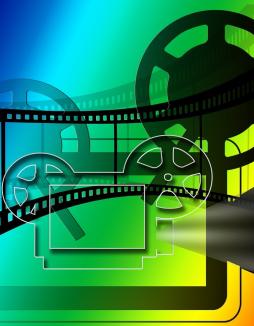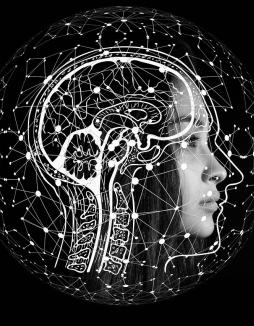8 Reasons Coding for Kids is Not Just Another Fad
Is Coding a Fad?
In short, no. Coding is a field that is growing and changing quickly; there is a world of opportunity for young students looking to get involved in the tech world. Opponents to this position might argue that today’s popular languages, like Python, won’t be used ten or fifteen years down the line. So what’s the use in learning these programming languages?
While it is true that programming will continue to advance, it is important to remember that there is so much more to learning a coding language like Python than memorizing syntax and applications. When we teach coding, we teach concepts beyond one particular language. Students gain knowledge about how computers process and “think” about a given problem, regardless of which language they are learning. They gain important intuition about fundamental concepts, like basic control structures (e.g. loops and conditional statements) and algorithms, that will undoubtedly be useful in our highly technological future. Below are 8 of the many reasons why coding for kids is not just another trendy or silly fad.
1. Our world is growing more technological
In the 21st century, we have seen enormous developments in the technology industry. The world is moving in a direction that is both fast-paced and information-centered. Data is quickly becoming one of the most valuable resources in the global economy, and individuals with digital literacy are becoming more valued in the labor market. With all of this in mind, it’s hard to ignore the massive role that fields like data science and software engineering, both largely centered around coding, are going to have. Figures estimate seemingly outrageous numbers - an estimated fifty billion smart devices are projected to be in use by 2020 - illustrating the abundance of technology in our lives.
2. It teaches kids to strategize for unique solutions
Computer science is a highly useful tool beyond its direct applications. As there is rarely one right answer to a given problem, computer science encourages students to create solutions that are unique. For computer scientists, this means that coders have a great amount of leeway to create their own intuitive solutions.
Teaching kids how to code pushes young students to actually learn, not just memorize facts and regurgitate them. It challenges students to critically think about a problem, what they want to accomplish, and how to get it done. There are plenty of kid-friendly coding languages, such as Scratch, that give young students the opportunity to build unique projects using coding techniques. Scratch also allows coders to share their projects with the world. This connectivity can inspire new and aspiring coders to learn from their peers and guide them through more complicated projects and concepts. This collaborative environment also allows students to work together and learn from one another. Encouraging kids to utilize these programs not only teaches them useful skills for computer science, but it also allows them to exercise their creativity.
3. It teaches students to not give up
Most coders will advise, while there is plenty of room for creativity in coding, there is also plenty of room for error. Learning to code teaches students how not to give up on their solutions, but rather to debug their code, even when repeated error messages appear. Coders tease out solutions by using their understanding of computational thinking (see point 6) to isolate any errors and achieve the goal at hand.
That code can always be improved upon motivates coding students to go back and better their solutions, an incredibly valuable skill set to have in general. Code also instills resilience, yet another invaluable tool in the workplace. While programming can feel tedious, frustrating, and difficult at times, the process of problem-solving inherently makes for better coders and better students.
4. It can be applied to almost everything that students are learning
Computer science is expanding into every corner of the world, with applications for anything one can imagine and automated services that are permeating thousands of business models worldwide. On top of that, programming incorporates many mathematical concepts, and it can complement the concepts students are learning in their math classes.
Coding also promotes problem-solving, an important skill for any student. Beyond math, students can use code to support other interests they may have. With coding, young professionals’ career options extend across industries. By teaching kids how to code, students will find the confidence and tools to explore aspects of software engineering, data analysis, video game development, and mobile app development - in just about any industry that they know and love.
5. It is challenging and collaborative
Coding challenges young students to explore new fields. Computer science is a collaborative field, allowing individuals to work together to complement one another’s skillsets and write code that is efficient and intuitive. Students can and often do learn to code in a group setting so that they can discuss their ideas and learn from each other’s successes. Learning to code encourages students to work together when they reach a roadblock. It promotes collaboration via idea exchange and allows students’ to compare and contrast solutions. Teaching kids about computer programming can be a catalyst for inspiring teamwork and leadership among students.
6. It teaches students about computational thinking
Whichever languages a student decides to pursue - Python, Java, or any of the long list of popular coding languages today - will help them develop computational thinking. This means that students will learn how to effectively break down problems into manageable parts, observe patterns in data, identify how these patterns are generated, and develop the step-by-step instructions for solving those problems.
Computational thinking and digital literacy are arguably the most important aspect to learning to code at any age due to the huge technological shift in nearly every industry on the global market (see point 1). Establishing a foundation in computational thinking will pave the way for future success in and outside CS-related fields. All students can benefit from understanding computational thinking, as it applies to the technological aspects of daily life.
7. It’s good for the brain
Like any good challenge, coding is an excellent way to strengthen young, developing brains. It encourages students to combine their knowledge of computational learning and out-of-the-box thinking to strategize unique solutions.
Multiple studies support the hypothesis that learning to code has real, long term benefits on young children. Researchers have found that individuals who code tend to have reduced odds of getting neurodegenerative diseases in older age. Coders also tend to do better in cognitive tasks, because coding activates areas of the brain that are associated with memory, attention, and logic. Learning to code at an early age supports neural connections in these regions, leading to high performance in other fields, as well.
8. It’s fun!
While we may be slightly biased, computer science is an educational way to bring fun into your children’s lives! Computer science is one of the few fields of study in which students can see the immediate outcome of their work as they build out their projects - by running their code, they get instant, live feedback.
Programs like Scratch and Repl.it utilize software that is kid-friendly and permits students to visualize their projects as they come to life! They can build code that creates a videogame or a website and share their work with friends. Developing kids’ proficiency in computer science now will lead to a future generation of coders who have the skill set to advance our world.
This article originally appeared on junilearning.com












